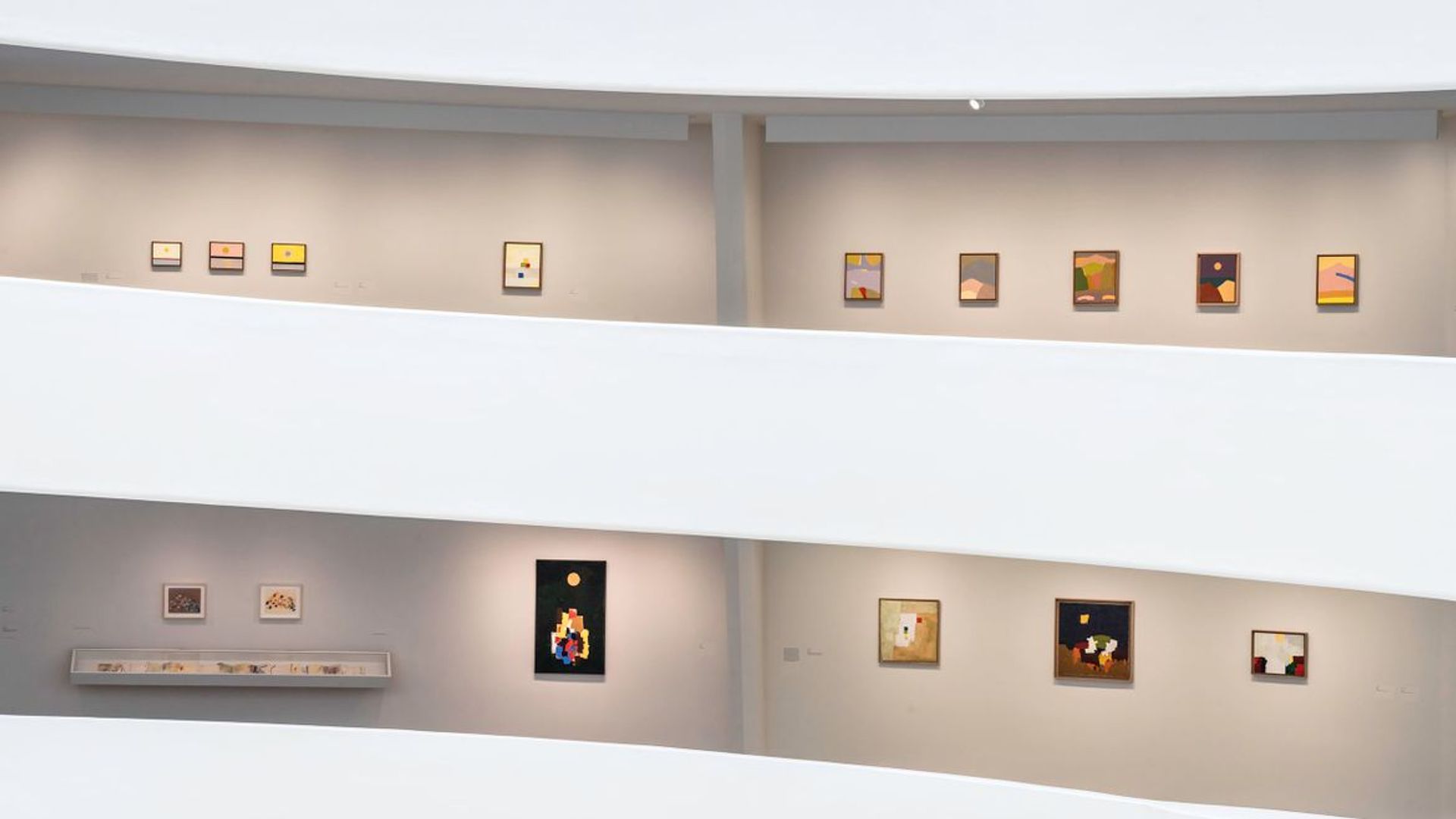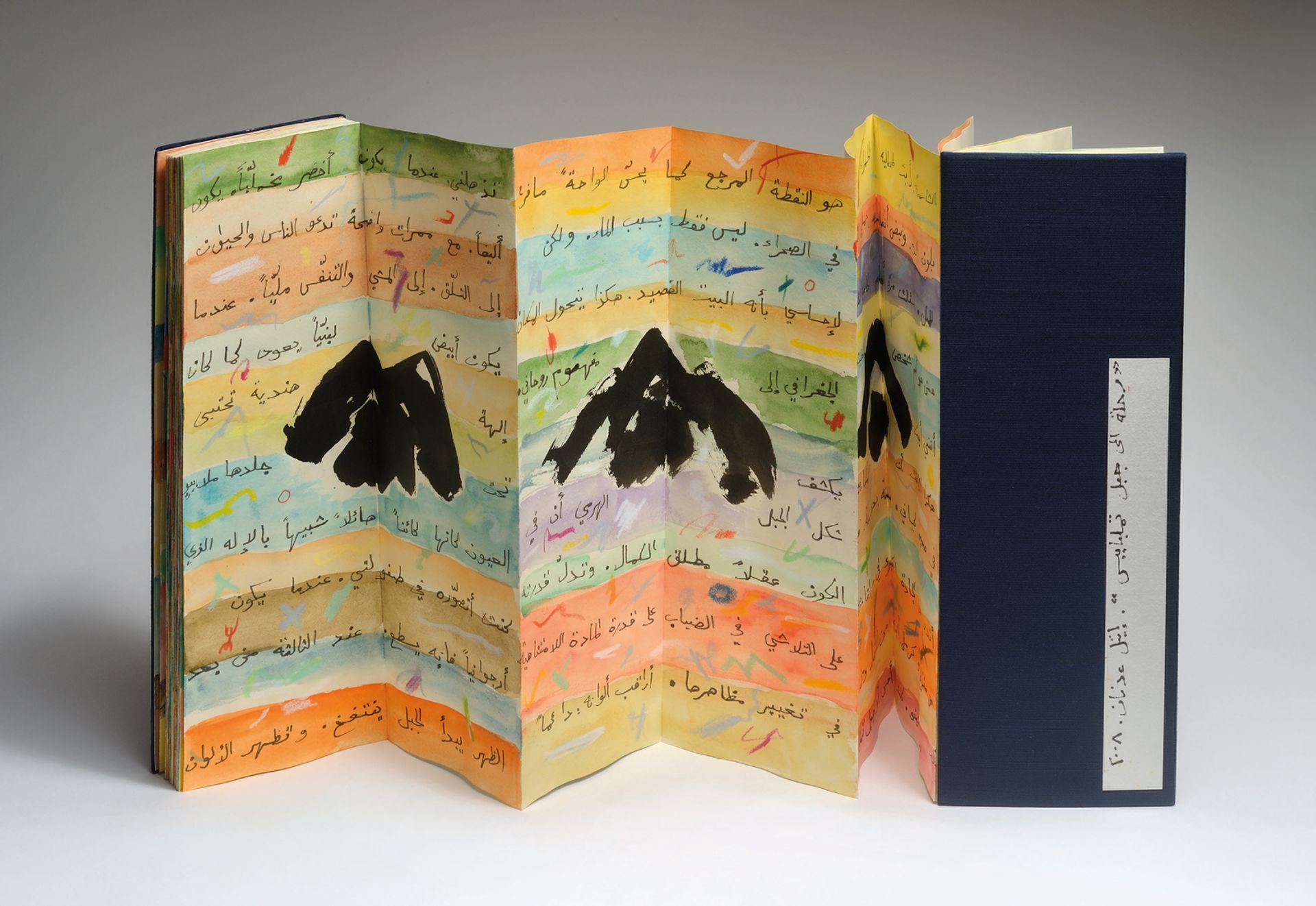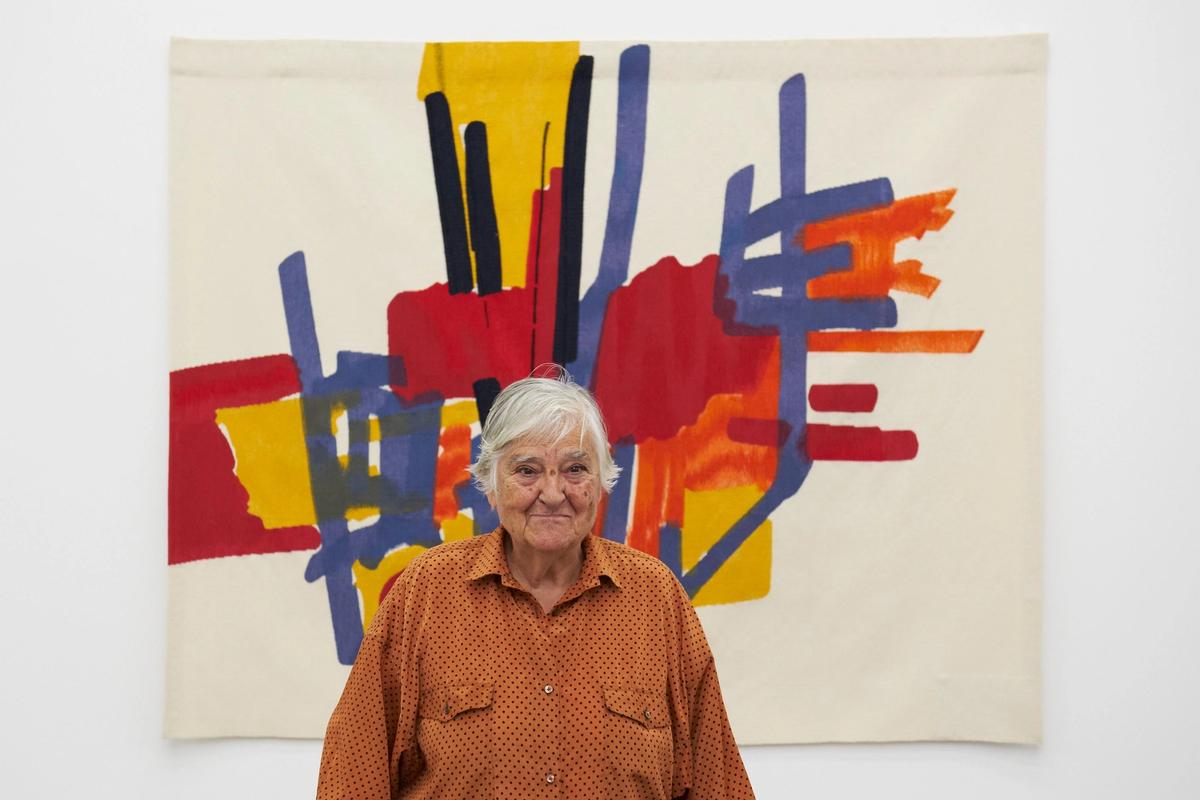The influential Lebanese-born artist and writer Etel Adnan has died, aged 96. Her death was confirmed by her longtime partner, Simone Fattal, according to the New York Times.
Curators, artists and scholars paid tribute to Adnan across social media this weekend. Hans Ulrich Obrist, the artistic director of London’s Serpentine Galleries, posted a handwritten note on Instagram by the artist stating: “Love doesn’t die when we die. It is our resurrection.”

Installation view, Etel Adnan: Light’s New Measure, Solomon R. Guggenheim Museum, New York, October 8, 2021–January 10, 2022. Photo: David Heald © Solomon R. Guggenheim Foundation, 2021.
An exhibition of Adnan’s works is currently on show at the Solomon R. Guggenheim Museum in New York (Light’s New Measure, until 10 January 2022) in conjunction with the major Kandinsky exhibition that opened there earlier this month. Like Kandinsky, many of Adnan’s works feature vibrant, floating orbs within minimalist landscapes, suggesting celestial bodies that evoke the scale of the boundless universe and the spirituality of the cosmos.
In a Twitter post, the Guggenheim wrote: “We mourn the loss of Etel Adnan and celebrate her indelible literary and artistic achievements, which have left a trace on so many people across the world. We are deeply honoured by the current presence of her radiant paintings in Light’s New Measure.”

Etel Adnan and Simone Fattal, photographed at their home in the Bretagne, July 2021. Photo by Louis Canadas for Art Basel.
Adnan was born on 24 February, 1925, in Beirut to a Turkish father and Greek mother. She was until a few years ago, primarily known for her writing; her 1977 novel Sitt Marie Rose won the France-Pays Arabes award, while her poetry collections include Moonshots (1966) and Seasons (2008).
According to her website, she studied philosophy at the Sorbonne, Paris. In 1955 Adnan went to the United States to pursue postgraduate studies in philosophy at U.C. Berkeley, and Harvard. From 1958 to 1972, she taught philosophy at Dominican College of San Rafael, California.

Untitled (2010), one of Adnan’s clearly demarcated colour compositions. Courtesy of the artist and Sfeir-Semler Gallery, Hamburg/Beirut
In an interview with The Art Newspaper in 2018 marking a solo show at the Zentrum Paul Klee in Bern in 2018, Adnan described her early life and experiences in France as a scholarship student when she “discovered the Louvre. It was empty at that time and I would wander by myself. There were two or three things that struck me, including the Venus de Milo and the Winged Victory of Samothrace”.
She started painting in 1959 when she was 34. “While these early works were largely abstract compositions, with squares of colour applied directly from the tube, she was interested in the immediate beauty of colour,” says a press statement from the Serpentine Galleries which held her first UK solo show in 2016.

Rihla ila Jabal Tamalpais (Journey to Mount Tamalpais) (2008, above) is an example of Etel Adnan’s leporellos. ©Etel Adnan; courtesy of Galerie Claude Lemand, Paris, and Jean-Louis Losi, Paris
In 1964, she began making leporellos—accordion-like pieces combining poetry and art—which reference Arab calligraphy. “I didn’t change my practice. You know, all artists change but something of them remains through art—their identity,” she told The Art Newspaper. She also produced an extensive series of paintings from the late 1970s portraying Mount Tamalpais in California. In latter years, Adnan created works in a small studio in her Paris apartment, using a palette knife to apply paint on the canvas.
Adnan's contribution to Documenta 13 in Kassel in 2012 made her an art-world star, bringing her small, abstract canvases to new, appreciative audiences. Carolyn Christov-Bakargiev, the director of Documenta 13, tweeted that Adnan “loved mountains, the sea, colours, people, friends… she gave us strength and I loved her.”
Other art world figures paid tribute to Adnan including the director of the National Portrait Gallery in London, Nicholas Cullinan, who posted on Instagam: “RIP to the great artist and poet Etel Adnan.” Shiva Balaghi, the Los Angeles-based cultural historian, posted: “There was passion and compassion in Etel Adnan’s poetry and painting. There was a lifelong commitment to activism, a profound truth in her solidarities.”
Asked about garnering accolades for her painting later in life, the artist said: “To be honest, I did not expect recognition. I was happy to keep going. Some people I respected liked my work. I was selling two or three paintings a year at very low prices, but it kept my image going. That is important. In the beginning, every article started with [mentioning] my age. I thought it was funny but I got a little annoyed. I won’t make an issue out of that; most female artists who are well known became known later in life.”


